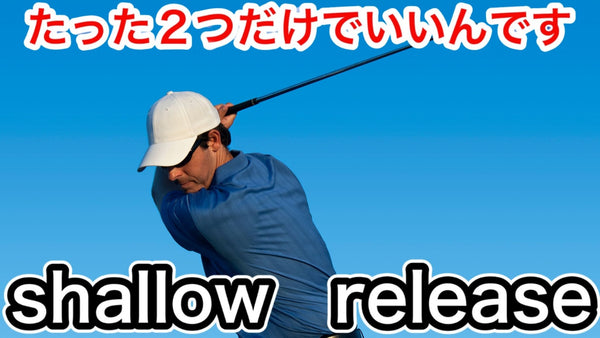Necessity of Lesson 2(caution)
【Golf Swing Video Content】
The problem of amateurs failing to improve, even when following lessons from famous pros and coaches, is a universal issue.
This stems from two main causes: - Lessons often teach swings completely different from those used by the world’s top professionals.
- Many lessons are overly focused on knowledge, lacking instruction that allows amateurs to *feel* the correct movements.
To address this, our channel has developed a groundbreaking Japanese-first lesson system that condenses key points into just two principles, based on top-tier swing fundamentals.
This system is now available globally in the form of an "e-book."
Our team brings years of experience coaching athletes and players in sports like basketball and baseball, including guiding top-performing teams at the prefectural level and nurturing children who went on to become professionals.
Now, this "coaching expert" has entered the golf swing industry!
The core of sports instruction is "experience," not "knowledge."
We believe that our fully systematized, Japan-first content will revolutionize the global golf lesson industry!
What amateurs truly desire is a swing like the top pros: **long drives, accuracy, and a stylish form.**
However, instructors worldwide often claim, "There is no correct golf swing," leading to subjective theories and lessons.
This has created an oversaturated market of unnecessary instruction, causing confusion and hindering improvement for countless viewers.
**This is a complete failure by the industry to fulfill its true purpose and function.** A widespread frustration of players thinking, "I’m not improving even after watching lessons from famous pros and coaches on YouTube."
How to Execute a "Shallow" Downswing from the Inside
Outside swing path

Early release

Inability to maintain your forward tilt

These common problems for amateur golfers
Can all be solved and improved with just one thing—the correct "shallow downswing."
⬇️
In Lesson 1, we covered one of two key movements, but
Just mastering the movement in Lesson 1 won’t give you a professional-level swing.
The shallow movement taught in Lesson 2️⃣ involves "right rotation," and without this movement, the club cannot be properly lowered to the P6 position, resulting in a swing far from a professional level.
This highlights the importance of Lesson 2's movement,
For those whose shots curve due to flipping the wrists,
Or those avoiding wrist action due to poor consistency,
Many lesson pros and tour pros who recommend swings that don’t involve wrist flipping or focus on body turn swings,
Many teaching pros and tour professionals,
Along with many amateur golfers,
Are majorly responsible for the misunderstandings and confusion surrounding Lesson 1's movement.
The movement in Lesson 1 is a 'leftward rotation.'
To make the most of this movement,
You must pair it with Lesson 2's 'rightward rotation when lowering.'

To fully utilize the left rotation from Lesson 1,
It's essential to incorporate the right rotation from Lesson 2.
'Right rotation' + 'Left rotation' = The completion of a world-class swing that doesn't curve even with wrist action.
This is how the relationship is demonstrated.
No one in the world has yet explained and systematized this mechanism.
I believe this discovery is revolutionary for the global golf industry.
I can confidently say it’s nearly impossible to learn this movement through self-study by just watching YouTube lesson videos—you have to be taught to truly understand it.
(Even with instruction, the feel can be difficult to grasp.)
The reason is that this content, even including YouTube lesson videos, is almost nowhere to be found for free worldwide.
The mechanism of right and left rotations expanding the club’s range of motion.

The image above shows the limited range of motion when swinging without Lesson 1 and 2’s movements and without wrist flipping.
Swinging to hit the face square results in zero change in the club’s range of motion.
This is a major reason why swings with locked wrists don’t generate distance.
In contrast, incorporating the movements from Lesson 1 and 2 more than doubles the range of motion compared to a locked-wrist body turn swing. ↓

Furthermore, amateurs who don’t apply Lesson 2’s movement have extremely narrow club acceleration zones due to early release.

Pros who incorporate the movement from Lesson 2 have club acceleration zones that are more than twice as wide as those of amateurs.👇

The difference in range of motion between pros and amateurs is a key reason why pros hit further.
Yet, many people, including pros who teach fixed-wrist swings, don’t address this mechanism at all.
I argue that this is the fundamental reason why watching famous pros' lesson videos doesn't lead to improvement.
Those who can perform Lesson 1's movement should know that if they achieve this position⬇︎,

they’ll hit the ball correctly.
Which means⁉️
Even if it originally starts in this state...⬇︎

If you can bring yourself into this position, you’ll realize that the swing is complete.

This is one of the big differences between amateur and pro swings.


Amateur↓

Pay attention to this 'angle'↓

Skilled players have their wrists at an angle that makes the club parallel to the ground, while almost 100% of amateurs have the club drooping with no angle maintained in the wrists. ↓

This is commonly known as 'early release.'
Take a moment to check your own swing.
This happens because your image of the swing and the way you swing are entirely different from a pro’s.


